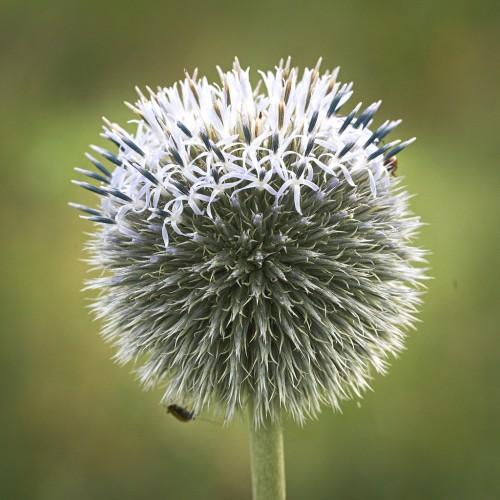
great globe thistle
Echinops sphaerocephalus
Cycle:
Herbaceous Perennial
Watering:
Minimum
Hardiness Zone:
3 - 9
Flowers:
Flowers
Sun:
Full sun
Leaf:
Yes
Growth Rate:
Low
Maintenance:
Low
Drought Tolerant:
Yes
Salt Tolerant:
Yes
Thorny:
Yes
Invasive:
Yes
Care Level:
Medium
watering
Great globe thistle prefers well-draining soil and will thrive in sunny positions. It is advisable to water moderately while the plant is actively growing during spring and summer. The frequency of watering should be roughly once a week, ensuring that the soil is evenly moist. However, it is important not to overwater as this may cause the plant to rot. During autumn and winter, when the plant is not actively growing, it should only be watered when the soil is almost completely dry.
sunlight
Great globe thistle (Echinops sphaerocephalus) needs full sun to thrive. This plant enjoys 6-8 hours of direct sunlight per day, and will produce the best blooms when given the most sun possible. Additionally, during the hot summer months, it should also receive some shade to help avoid sunburn. This plant should be planted in areas that receive full sun in the morning and afternoon, with some shade during the mid-day. Planting them in spots that have some full afternoon shade will provide some protection against high temperatures and ensure more vibrant blooms.
pruning
Great globe thistle (Echinops sphaerocephalus) should be pruned in late winter or early spring to promote healthy growth and maximize the plant's ornamental potential. Pruning helps to remove dead, damaged, or disease-ridden branches, promoting better air circulation and more flowers. After the coldest winter months, take sharp, clean shears and prune back the stems that have been weakened by the cold, so that they can regrow stronger and healthier. Pruning should focus on selectively removing older, brittle branches, removing those that rub against each other, and reducing stems that are overcrowded. When pruning, aim to reduce the tallest stems and create an open, airy form and prevent the centre of the plant from becoming too dense. If necessary, prune again in the late summer to reduce the size of any overgrown stems or remove spent blooms.
